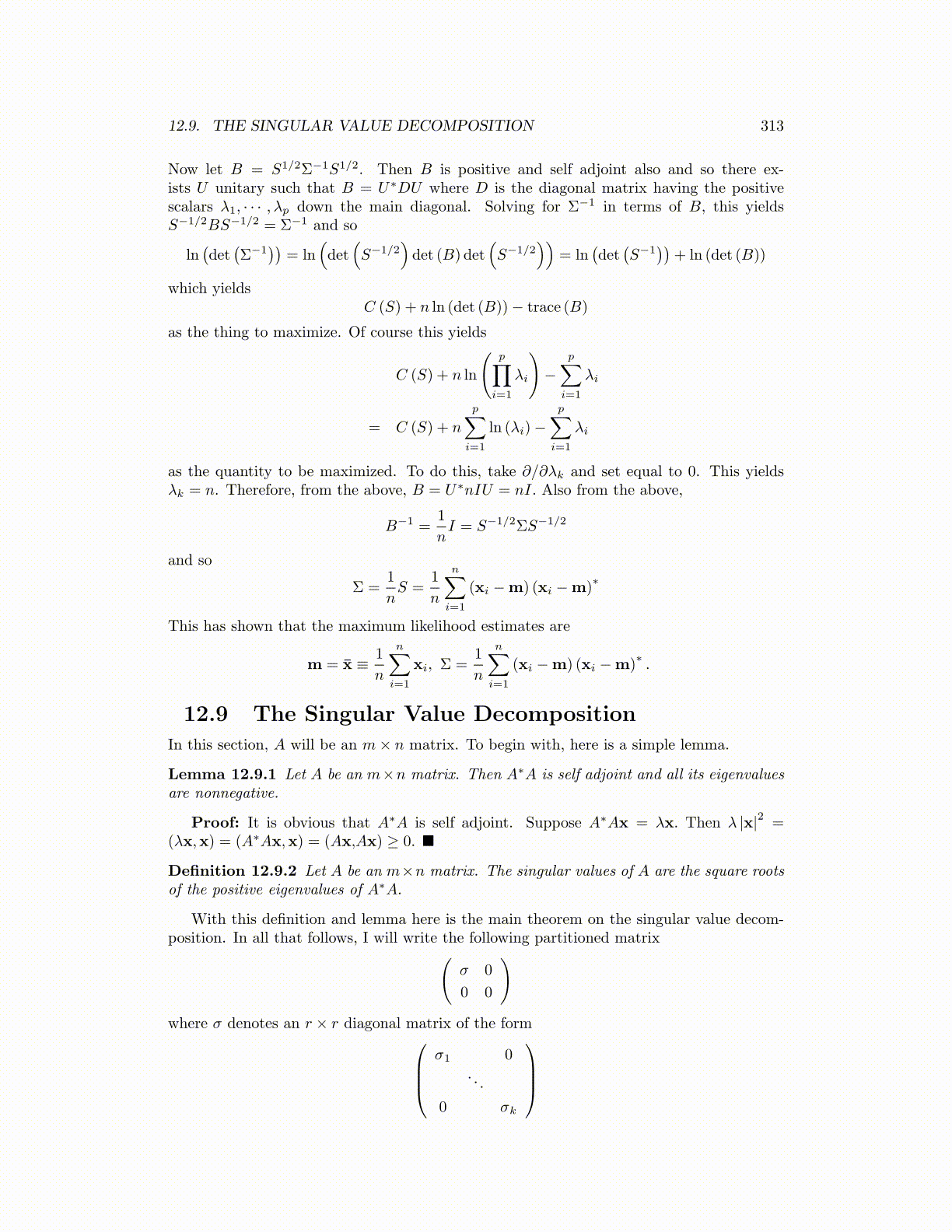
12.9. THE SINGULAR VALUE DECOMPOSITION 313
Now let B = S1/2Σ−1S1/2. Then B is positive and self adjoint also and so there ex-ists U unitary such that B = U∗DU where D is the diagonal matrix having the positivescalars λ1, · · · , λp down the main diagonal. Solving for Σ−1 in terms of B, this yieldsS−1/2BS−1/2 = Σ−1 and so
ln(det(Σ−1
))= ln
(det(S−1/2
)det (B) det
(S−1/2
))= ln
(det(S−1
))+ ln (det (B))
which yieldsC (S) + n ln (det (B))− trace (B)
as the thing to maximize. Of course this yields
C (S) + n ln
(p∏
i=1
λi
)−
p∑i=1
λi
= C (S) + n
p∑i=1
ln (λi)−p∑
i=1
λi
as the quantity to be maximized. To do this, take ∂/∂λk and set equal to 0. This yieldsλk = n. Therefore, from the above, B = U∗nIU = nI. Also from the above,
B−1 =1
nI = S−1/2ΣS−1/2
and so
Σ =1
nS =
1
n
n∑i=1
(xi −m) (xi −m)∗
This has shown that the maximum likelihood estimates are
m = x̄ ≡ 1
n
n∑i=1
xi, Σ =1
n
n∑i=1
(xi −m) (xi −m)∗.
12.9 The Singular Value Decomposition
In this section, A will be an m× n matrix. To begin with, here is a simple lemma.
Lemma 12.9.1 Let A be an m×n matrix. Then A∗A is self adjoint and all its eigenvaluesare nonnegative.
Proof: It is obvious that A∗A is self adjoint. Suppose A∗Ax = λx. Then λ |x|2 =(λx,x) = (A∗Ax,x) = (Ax,Ax) ≥ 0. ■
Definition 12.9.2 Let A be an m×n matrix. The singular values of A are the square rootsof the positive eigenvalues of A∗A.
With this definition and lemma here is the main theorem on the singular value decom-position. In all that follows, I will write the following partitioned matrix(
σ 0
0 0
)where σ denotes an r × r diagonal matrix of the form
σ1 0. . .
0 σk